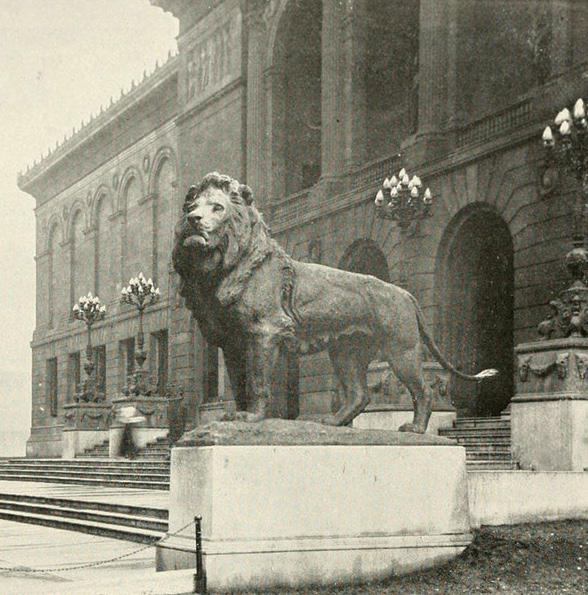
When I was growing up, the Art Institute of Chicago had a real, honest-to-goodness treasure chest behind the central staircase on the main floor; this was not just a trunk up-graded to Arabian Night stature via rose-colored remembrances; it was a real treasure chest, worthy of Long John Silver’s scowl or the Count of Monte Cristo’s cave. Its brass-studded lid was elaborately engraved, its lush interior was upholstered in red velvet, and was filled with glittering coins. A small sign above this remarkable repository proclaimed that any cash contributed to the chest would pay for art student tuition at the Art Institute School.

Art students? Romance on top of Romance!
What child intent on becoming an adventuress could stand before such an Altar of Art and resist tossing pennies, nickels, dimes and dreams through the burnished-brass mesh and watch them bounce, glisten and tinkle against the other nickels, dimes, and quarters (even a few dollar bills), already amassed below?
I glared and stared at the treasure.
I dreamed, not of what money could buy, but of lives dedicated to sculpture, to painting, to art. I conjured up images of slim and starving artists in garret apartments…and at the bottom of that chest, I saw what I wanted from life: The pure and unadulterated passion to create, and therefore to be really and truly alive.
My father had a lifetime family membership to the Art Institute of Chicago, for which he had paid a princely sum. It entitled us to an unparalleled array of delights, including discounts at the gift shop (my second favorite exhibit at the museum), and admission to the Members Library, a sanctified place with polished wood chairs behind smooth wooden tables—at which it would be a sacrilege to read anything less erudite than illuminated manuscripts—and also priority admission to every Art Institute exhibition.
This lifetime membership imparted to each of my father’s children a sense of boundless elitism. During a recent trip to the Art Institute, I discovered that an exhibition of Edward Hopper’s paintings was all the rage. People were standing five wide in a line that staggered down the stairs and continued along Michigan Avenue.
Not for me, though, the common herd. I gazed pityingly at the rabble, strode up the steps, and flashed my father’s membership card at the guard.
“Go right in,” he said. And I did.
Other children may have had their own speedboats or yachts, country club memberships, jewels, boyfriends, tuitions at Ivy League colleges, gardeners, butlers, and cars, and in our neighborhood, they did. But Samuel Reuben’s children were members of the Art Institute! We strode past glum guards with confidence and aplomb. We knew every inch of the place, from the administration offices, to the school, to the Thorn Miniature Rooms, where tiny parlors and palaces evoked images of what dream domiciles might be. We marched up the stairway beneath Picasso’s Guernica, we drifted beyond boring Chinese vases and expressionless Buddhas, and like cream, we rose to the inexpressible wonder of the paintings and sculpture on the second floor.

Now, one thing I have learned over the past few decades is that objects which remain on view in one’s mind do not necessarily remain on view in one’s museum. This means that the “permanent exhibit” in my head doesn’t coincide with any permanent exhibit on the Art
Institute’s second floor.
Central to my permanent exhibit is a painting of a peasant girl who has obviously just heard something that set her spirit on fire. It is called The Song of the Lark, (Le chant de l’alouette), by Jules Breton, 1884, and looking at it, I realized for the first time what art is and what an artist must do: Take what is transitory, extract what is meaningful, and successfully render that thing, instant, or interaction permanent.
In fact, my first love…my first encounter…my first awe before objective, external art, was The Song of the Lark. Because of that painting, I will always think of the Art Institute as the most wonderful museum in the world.
There are a lot of Monets in the Art Institute’s permanent exhibit in my head. Hay stacks, bridges, and sunsets in various shadowy shades of pastel. There are a few Van Goghs and some pointillists in the park. Rodin’s statue, The Thinker, once made a guest appearance, and seeing him in the classic pose with his elbow on his knee and his chin balanced on his clenched fist was a bit of a shocker. Like realizing for the first time that it wasn’t Shakespeare who wrote clichés…but everybody else.
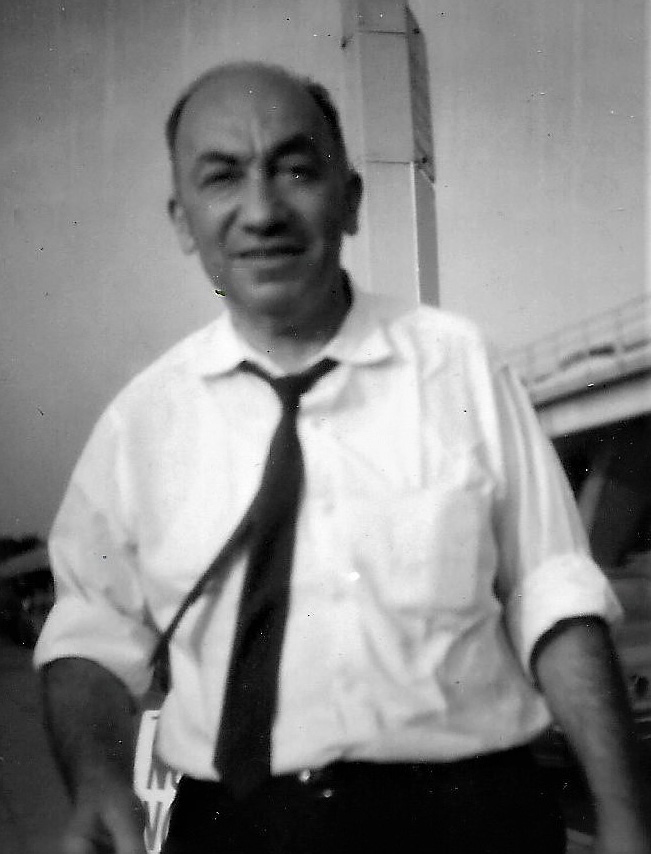
My wanderings through the rooms and corridors of the Art Institute had a timeless quality. If I had a dentist appointment on Michigan Avenue at three p.m. and was supposed to meet my father in front of the Art Institute at four, I would spend from four o’clock to five o’clock on the second floor, hurrying through rooms displaying dismal deaths on crucifixes, so that I could bide my time with Toulouse Lautrec’s high-kicking ladies at the Moulin Rouge.
If a quick check outside the museum indicated that my father had not arrived by five, I would pop back for fifteen-minute forays, never going above the first floor. A short trip to the photography exhibit and back outside at five-fifteen. No father? A dash down to the ladies room and up to the museum gift shop, where I would peer through a kaleidoscope or try on some Aztec earrings.
Back outside.
Still no father?
If his non-appearance occurred in the winter, for which Chicago’s icy winds are justifiably infamous, I would wait for him inside, hoping against hope that he would show up before the Art Institute closed (he always did).
But if it was summer, I would amble halfway down the museum’s front steps and loiter under, against, or on the tail of one of the Art Institute’s two majestic lions.
These lions, by the way, belonged to Samuel Reuben’s children. No matter how many other people’s children were waiting outside the Art Institute for their own mothers, fathers, sisters or brothers, there was always an empty spot under the lion’s chest or on the lion’s tail for us.
The lions were and are fierce, strong, protective, valiantly aggressive, graceful, noble, and true. They will be guarding the entrance to the Art Institute until the world ends. The lions in front of the main library on Fifth Avenue in Manhattan are piddly slouches compared to the stalwart giants that brave Michigan Avenue’s winter winds on Chicago’s Lake Shore.
These lions, the icy, lucid, dark winter nights, the erratic stop-start stream of traffic, the bitter blasts of Windy City wind, the warmth of a softly lighted lobby, the near familiarity of art—not an exalted and intimidating ART, but a warm, friendly, emotionally electrifying art—that is the Art Institute which my usually tardy, but always reliable father gave to his children. G&S
Copyright ©Shelly Reuben 2021

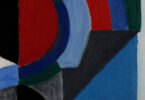
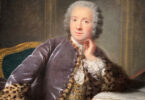
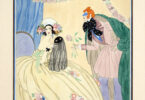
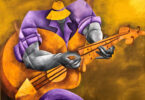
Request you to kindly let me know the procedure of your membership. Regards. Priyabrata Dhar. India
Hi Priyabrata
There is no membership requirement. However if you are looking to subscribe to our magazine please follow the link. https://www.galleryand.studio/subscribe/
There is no price for enjoying our content!
Best
G&S